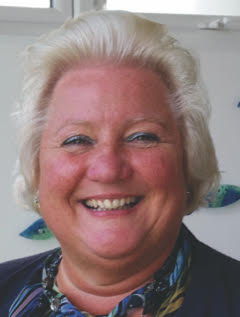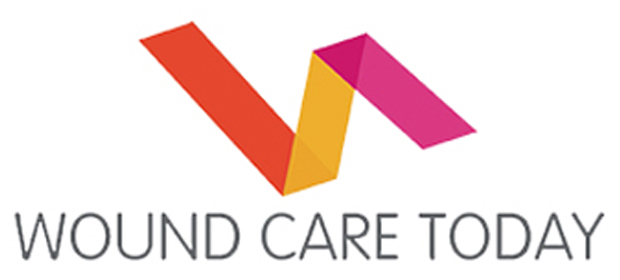We all learn in different ways and so it is important that teaching and educational materials embrace the different styles, or learning preferences, to make training more appealing and more effective (Xu, 2016).
An effective learning experience is one that is well understood, memorable and results in a new or enhanced way of thinking or practising.
An effective learning experience is one that is well understood, memorable and results in a new or enhanced way of thinking or practising.
(Anderson, 2016).
HOW DO WE LEARN?
Changes in our healthcare system are demanding that nurses develop new skills and competencies (Petit dit Dariel et al, 2013). Technology is present throughout nurse education with virtual learning environments, laptops, social media and mobile phones all routine components of nurse education (Goodchild, 2018). This has allowed educators to consider new and innovative methods of teaching professionals for their evolving roles without putting patients at risk (Petit dit Dariel et al, 2013), integrating information technology into nursing education (Kenny, 2002). It is important however, that the use of technology is approached critically and always considers what may be lost as well as what may be gained (Goodchild, 2018).The idea of individualised learning styles started in the 1970s and since then has greatly influenced education (Felder and Brent, 2016). It is however, not embraced by everyone with some believing that the evidence for learning styles is dated (1970s to 1990s), based in schools and unreliable, and that we should stop propagating the learning style myth (Anderson, 2016; Kirschner, 2017). That said, it is widely accepted in the literature and there are a large number of learning styles and teaching strategies to improve student learning (Anderson, 2016; Xu, 2016). This article outlines a few examples of some teaching and learning styles with particular relevance to nurse education.
Fleming's VARK model
Fleming’s VARK model (Fleming, 2017) is one of the common and widely used frameworks today. It identifies different types of learners:- Visual (spatial) learners will often doodle and find it easier to understand something in a diagram. By using images (e.g. an analogy) learners can utilise their visual memory (Box 1)
- Aural (auditory-musical) learners dislike reading and prefer to be told something out loud to understand it. Group discussions are ideal for the aural learner
- Verbal (linguistic) learners love to write and read and find it easier to express themselves by writing or speaking. Mnemonics, scripting and role playing are useful for this style of learning
- Physical (kinesthetic) learning involves a hands on approach using physical activity or watching a demonstration
- Logical (mathematical) learners like using their brain for logical and mathematical reasoning and recognising patterns. Logical learners often lean towards classifying and grouping information to help them further understand it
- Social (interpersonal) learners are sociable and prefer communicating with people, both verbally and non-verbally
- Solitary (intrapersonal) learners prefer working alone and are more private, independent and introspective. They prefer not to have the distraction of others.
Box 1. The analogy
An analogy is a comparison between things that have similar features, often used to help explain a principle or idea. Within the field of wound care, there are two recent examples.
- An example of an analogy was used by Atkin (2020) to describe the importance of diagnosing and treating the underlying aetiology in the management of a venous leg ulcer. She describes a venous leg ulcer as a weed, and to eradicate a weed you have to address the roots (i.e. the venous disease) to prevent it re-growing.
- The wound healing process is a complex sequence of events which can be broken down into four phases and likened to the emergency response (Shipperley and Martin, 2002). In a recent verbal communication, Tickle and MacDonald (2021) used an analogy to describe:
- Phase 1 Inflammation; firefighters putting out a fire
- Phase 2 Destruction; refuse collectors clearing the fire damage in preparation for healing
- Phase 3 Proliferation; builders restoring the structure of a building
- Phase 4 Maturation; decorators restoring the building to its former appearance.
Kolb's learning styles inventory
Kolb showed that learning styles could be seen as a continuum running from concrete experience to reflective observation, to abstract conceptualisation and finally to active experimentation (Rassool and Rawaf, 2007). There are four learning styles in Kolb’s learning styles inventory:
- Divergers — sensitive and imaginative
- Assimilators — ideas and abstract concepts
- Convergers — solve problems and prefer technical tasks
- Accommodators — people orientated who have a practical or experiential approach (Rassool and Rawaf, 2007).
Deep and surface learning
The term deep and surface learning approaches was originally coined in the 1970s (Entwistle and Peterson, 2004) and describes the two ways by which students approach university learning. Superficial learning relates to memorising information, or rote learning, for the purpose of assessment only and neglecting underlying principles and failing to see the connection between units of learning (Alsayed et al, 2020). This approach is unlikely to enable a student to develop their practical skills and prepare them for high-quality patient care and safety (Anderson, 2016). Deep learning is a well organised method where students immerse themselves in the subject. It is used to gain knowledge that results in an increase in understanding, leading to the development of interest and enjoyment in the subject (Alsayed et al, 2020). Here, the emphasis is on understanding and applying learning in practice, so the student is more likely to be able to use and adapt knowledge in clinical settings (Anderson, 2016).
Gamification
This style of learning is targeted at students who have grown up with digital technology (Kiryakova et al, 2014). Gamification uses game-based mechanics, aesthetics and game thinking to engage people, motivate action, promote learning and problem solve (Kapp, 2012). Hall (2014) explains how games can enhance traditional educational tools such as lectures, discussions, lab reports, homework, field trips, tests, and textbooks. Schools face major problems around student motivation and engagement (Lee and Hammer, 2011) and so teachers are having to embrace styles like gamification and adapt their teaching methods and approaches (Kiryakova et al, 2014), as demonstrated by Tickle and MacDonald (2021) in a new animated way to learn (www.mymicroworld.online).Other technology-based learning
Simulation can be used to mirror, anticipate or amplify real situations with guided experiences in a fully interactive way. It is already widely used in medical education, and it has been suggested that it may contribute significantly to preparing nursing students (McCaughey and Traynor, 2010).Online learning is emerging as an important addition to nurse education, but it requires a change in thinking (Kenny, 2002). For educators and some students, the learning curve with technology is an important consideration. In a study of nursing students examining satisfaction using online learning, Kenny (2002) found that the lack of computer confidence was a major theme that emerged.
The use of online materials may require a degree of self-directed learning. Not all students are self-directed and so a variety of teaching methods should be used (O’Shea, 2003). O’Shea (2003) found that mature students may be more self-directed than younger students and that self-directed learning increases confidence, autonomy and motivation.
Mangold et al (2018) describes a study examining learning style preferences that exist among practicing nurses. They concluded that while tailored education for individual preferences is impossible to achieve, delivering education in multiple formats to allow the learner to choose is most beneficial to learning (Mangold et al, 2018).
FACTORS AFFECTING LEARNING
The environment is seen as one of the major factors affecting learning (Hand, 2006), and it is the responsibility of the educator to create and monitor this (Hand, 2006). Other factors that can affect learning are:
- Embarrassment or discomfort
- Lack of assessment of the student’s intellectual ability, prior knowledge and experience
- Lack of interest
- Lack of structure in the teaching
- Negative past experiences of teaching
- Personality clash between the student and teacher
- Poor motivation or poor self-esteem
- Poor teaching ability
- Student anxiety
- Tiredness, pain, hunger and illness (Hinchliff, 1999).
PROFESSIONAL RESPONSIBILITY
Learning is essential and within nursing and midwifery, a personal responsibility. Started in 2016, revalidation is the process that all nurses and midwives in the UK and nursing associates in England need to follow to maintain their registration with the Nursing and Midwifery Council (NMC). It encourages reflection on the code of conduct (NMC, 2018a) in practice and working within the standards, demonstrating 35 hours of continuing professional development (CPD) and providing written evidence of reflection. There are many purposes to revalidation, including staying up to date by developing new skills and understanding the changing needs of the public and fellow healthcare professionals, and encouraging a culture of sharing, reflection and improvement (NMC, 2019).CONCLUSION
To create the best learning experience, teaching styles should embrace learning styles by developing a mixture of formats, utilising new and varied techniques, taking full advantage of the increasingly technological world that we live in. By doing so, we increase the chance of engaging with and motivating all learners. ‘Effective nursing practice that is attuned to the needs of the patient (and their families) is dependent on many things. A sound education in nursing theory, practice and delivery being the main driver. As a student of nursing during the ‘70s and ‘80s, undertaking mental health, learning disabilities and general nursing courses, my learning was as a result of a blend of methods and approaches, including classroom teaching and practical placements supplemented with self-directed study and reading. I did not have the advantage of technology in those early days, but have since benefited from it in higher education courses. Crucial to my own learning were my clinical placements, which embedded the classroom pedagogy to develop a broad knowledge and practice in each of the specialist fields of nursing. In those early days, I do not recall much attention being paid to understanding my own learning style; this became more tangible as my career and studies progressed and especially when undertaking courses that enabled me to teach other nurses and students. Reflecting on learning styles, I would argue that any or all of the various theories and styles have a part to play, dependent upon the course, the desired outcomes of the course, and (most importantly) the individual learner. I think we have moved towards a more realistic approach to learning that is underpinned by learning that embraces a blended approach. Learning is not binary, but rather what we see as the desired goals and how a learner and educator negotiate the pathway to achieve these. This can only be realised by recognising the individual learner while maintaining the standards required to demonstrate the outcome.’
‘Effective nursing practice that is attuned to the needs of the patient (and their families) is dependent on many things. A sound education in nursing theory, practice and delivery being the main driver. As a student of nursing during the ‘70s and ‘80s, undertaking mental health, learning disabilities and general nursing courses, my learning was as a result of a blend of methods and approaches, including classroom teaching and practical placements supplemented with self-directed study and reading. I did not have the advantage of technology in those early days, but have since benefited from it in higher education courses. Crucial to my own learning were my clinical placements, which embedded the classroom pedagogy to develop a broad knowledge and practice in each of the specialist fields of nursing. In those early days, I do not recall much attention being paid to understanding my own learning style; this became more tangible as my career and studies progressed and especially when undertaking courses that enabled me to teach other nurses and students. Reflecting on learning styles, I would argue that any or all of the various theories and styles have a part to play, dependent upon the course, the desired outcomes of the course, and (most importantly) the individual learner. I think we have moved towards a more realistic approach to learning that is underpinned by learning that embraces a blended approach. Learning is not binary, but rather what we see as the desired goals and how a learner and educator negotiate the pathway to achieve these. This can only be realised by recognising the individual learner while maintaining the standards required to demonstrate the outcome.’
Karen Harrison Dening
Head of research and publications and professor of dementia nursing, De Montfort University
 'When acknowledging individual learning styles, preparing an appropriate learning environment also needs to be considered. This will enable students to gain the most from their learning experience. Making the learning environment inclusive to all students is essential and should be fundamental when preparing learning and teaching activities, forming one of the central pillars within the curriculum framework. Learning activities, learning environments and planned sessions should include consideration of educational and cultural backgrounds, with any physical sensory impairment taken into account. This would include using sub-headings, clear linear layouts on presentations, readable font, clear images and easy to follow links. Considering cultural/religious requirements which may impact on learning is essential. Students with identified disabilities will also have clear requirements identified. These may include building in regular breaks, repeating questions and instructions to ensure that they have been understood, recording sessions for playback and hearing loops in classrooms for students hard of hearing (this list is not exhaustive). The duty to make reasonable adjustments is anticipatory, which means teaching sessions should be designed to anticipate all learning needs and learning styles.
'When acknowledging individual learning styles, preparing an appropriate learning environment also needs to be considered. This will enable students to gain the most from their learning experience. Making the learning environment inclusive to all students is essential and should be fundamental when preparing learning and teaching activities, forming one of the central pillars within the curriculum framework. Learning activities, learning environments and planned sessions should include consideration of educational and cultural backgrounds, with any physical sensory impairment taken into account. This would include using sub-headings, clear linear layouts on presentations, readable font, clear images and easy to follow links. Considering cultural/religious requirements which may impact on learning is essential. Students with identified disabilities will also have clear requirements identified. These may include building in regular breaks, repeating questions and instructions to ensure that they have been understood, recording sessions for playback and hearing loops in classrooms for students hard of hearing (this list is not exhaustive). The duty to make reasonable adjustments is anticipatory, which means teaching sessions should be designed to anticipate all learning needs and learning styles. Students learn in a variety of different ways, so it is useful to include a variety of teaching methods to meet student inclusivity. Utilising different teaching methods to improve inclusivity to enhance learning is vital. The Office for Students message for inclusivity is to ensure that all students are given an equal opportunity to succeed. This includes equal opportunity to gain knowledge in a way that is meaningful to the individual.
Teaching strategies include presentations, quizzes, group work and utilising learning technologies including simulation. Use of Microsoft Teams, Blackboard virtual learning environment, simulation, including virtual reality and other technologies, offers added dimensions to learning which captures students who do not learn well from traditional lecture styles. Students come from a variety of backgrounds with differing learning styles and methods which suit them. Providing a variety of teaching and learning strategies to suit all learning needs will provide inclusivity to all students, ensuring no one is left behind.'
Lisa Ashworth
Lecturer in district nursing, pathway leader community specialist practitioner district nurse, module leader management of leg ulcers, University of Central Lancashire; Queen’s Nurse
 'In response to the increasing diverse nature of student intakes, which includes age, prior healthcare experience, educational attainment, differing cultures, students for whom English is not a first language and differing learning styles, the majority of undergraduate nursing curricula use a blended approach to accommodate all these factors. This includes face-to-face teaching (or lectures via Zoom), workshops, seminars, self-directed, online learning via university virtual learning platforms, such as Moodle, case studies, role play and simulation.
'In response to the increasing diverse nature of student intakes, which includes age, prior healthcare experience, educational attainment, differing cultures, students for whom English is not a first language and differing learning styles, the majority of undergraduate nursing curricula use a blended approach to accommodate all these factors. This includes face-to-face teaching (or lectures via Zoom), workshops, seminars, self-directed, online learning via university virtual learning platforms, such as Moodle, case studies, role play and simulation.It is, however, also easy to make assumptions on preferred learning styles, i.e. that younger people will be more IT literate and prefer online learning than mature students — however, from my experience, this is not always the case. The blended approach, therefore, aims to offer a wide range of teaching to appeal to all learning styles.
Current nursing curricula tend to be underpinned by experiential learning (Kolb, 1984) which encourages the learner to reflect on an issue or situation, critically analyse any supporting literature, and, with guidance, encourages learners to be intellectually curious. By exploring their gaps in knowledge, they put an action plan in place to support their future learning. This gives the adult learner responsibility for their own learning and requires a commitment to make the best use of all resources to benefit from their learning experience.
The assessment format will also influence learning style, for example, in preparing for an anatomy and physiology exam, students may find learning body systems by heart to be the most effective way of learning. Similarly, memorising a process, such as drug calculations formulae, will help achieve a pass, however, is this deep or strategic learning and does it really matter as long as the student becomes competent in drug calculations?
From my experience as a nursing lecturer, the aim of the majority of students is to pass an assessment. Very often, from the very first lecture of a new module, students are concerned about the type and topic of the assessment. This, in itself, can be a barrier to learning, as they tend to focus on the end result (the assessment) rather than the process of learning. Again, this could be classed as superficial learning.
In the past, there has been discussion on the theory/practice gap and whether writing and passing an academic essay improves clinical practice (Salah et al, 2018). This has been widely acknowledged and addressed in the new practice assessment document (PAD), ‘Future nurse: Standards of proficiency for registered nurses’ (Nursing and Midwifery Council [NMC], 2018b). This has reflective practice as its foundation to enable student nurses to learn from their experiences in clinical practice, to link theory and practice, to describe and understand their own feelings and influence and develop as a reflective practitioner in clinical practice.
The PAD is divided into three levels. Year 1 — guided participation in care and performing with increasing confidence and competence with descriptive reflection at academic level 4; Year 2 -— active participation in care with minimal guidance and performing with increased confidence and competence with developing reflection at academic level 5. By year 3, the student will be practising independently with minimal supervision and leading and coordinating care with confidence and be skilled at deep, critical reflection at academic level 6. Ongoing assessment from both an assessor who assesses the student academically and a practice assessor who will be familiar with different learning styles and able to adapt to the student’s preferred learning style will go some way to address the theory/practice gap.
Whatever the preferred learning style, it is hoped that this approach will enable the student to become a lifelong reflective practitioner, which is a key requirement of the NMC’s ‘Future nurse: Standards of proficiency for registered nurses’ (NMC, 2018b).'
Annemarie Brown
Lecturer, BSc Adult Nursing, School of Health and Human Sciences, University of Essex
 ‘The smorgasbord of teaching styles currently available, including the increased move to online educational support due to the impact of the pandemic needs to dovetail with the divergent learning styles of individual student nurses, registered nurses or community practitioners. Such a multitude of educational approaches enables the four key areas of professional responsibility — ‘The Code’ — (Nursing and Midwifery Council, [NMC]), 2018a) to be upheld in nurses’ daily actions including to: prioritise people, practice effectively, preserve safety, and promote professionalism and trust to be accommodated. Nurses also need to be aware of their own preferred or most effective learning styles to ensure that they choose what suits them so that they can enhance the professional care that they give to their patients.
‘The smorgasbord of teaching styles currently available, including the increased move to online educational support due to the impact of the pandemic needs to dovetail with the divergent learning styles of individual student nurses, registered nurses or community practitioners. Such a multitude of educational approaches enables the four key areas of professional responsibility — ‘The Code’ — (Nursing and Midwifery Council, [NMC]), 2018a) to be upheld in nurses’ daily actions including to: prioritise people, practice effectively, preserve safety, and promote professionalism and trust to be accommodated. Nurses also need to be aware of their own preferred or most effective learning styles to ensure that they choose what suits them so that they can enhance the professional care that they give to their patients. To enable a practitioner to improve person-centred integrated care with competence and professionalism, including in the community care setting, the education they receive needs to enhance their critical thinking and critical reflection. This provides an increased opportunity for primary care individuals to incorporate the many challenges that they face in the diverse and demanding arena of community-primary care.
Heer (2012) discusses six levels of theory related to critical thinking and the nurse/practitioner may well apply these in a variety of settings including the community. Evaluation of the patient, their care and needs and individual setting results in a clinical judgement. Trying a different strategy to improve care and transform practice while maintaining patient safety (NMC, 2018a) involves creative thinking and practice.
As nurses and practitioners in the caring environment, there is an ongoing debate to advance knowledge to inform care giving and improve patient care. This debate involves the discussion around opposing ideas leading to a new way of action, thinking, or caring termed by Hegel (1770–1831) as dialetic theory moving from one position to another — thesis to antithesis to synthesis, as ideas emerge in an ongoing process. This suits primary care particularly well where there are a variety of patient populations with differing needs and situations and the community nurse and team can move their practice forward in a professional, safe (NMC, 2018a) and critical manner to enhance care.
Being able to choose the most appropriate style of learning is vital to aid learning and continue to develop care. Therefore, there is a clear need for educational and practice arenas to provide a wide variety of educational learning opportunities to their students and workforce.’
Teresa Burdett
Senior lecturer in integrated health care, Bournemouth University
References
Alsayed S, Alshammari F, Pasay-an E, Dator WL (2020) Investigating the learning approaches of students in nursing education. J Taibah University Med Students 16(1): 43–9
Anderson I (2016) Identifying different learning styles to enhance the learning experience. Nurs Standard 31(7): 53–61
Atkin L (2020) Legs Matter: challenging the status quo. Available online: /www.woundcare-today.com/uploads/files/files/WCT-FB-Live-1-Dec-2020-Legs-Matter.pdf
Brown A (2020) Shared decision-making and patients self-care in wound management. J Community Nurs 34(5): 47–51
Entwistle NJ, Peterson ER (2004) Conceptions of learning and knowledge in higher education: Relationships with study behavior and influences of learning environments. Int J Educ Res 41(6): 407–28
Felder RM, Brent R (2016) Teaching and Learning STEM: A Practical Guide. Jossey-Bass, San Francisco. Available online: http://educationdesignsinc.com/book/
Fleming N (2017) The VARK modalities. Available online: http://vark-learn.com/introduction-to-vark/the-vark-modalities/
Goodchild T (2018) Does technology really enhance nurse education? Nurs Educ Today 66: 69–72
Hall M (2014) What is gamification and why use it in teaching? The innovative instructors blog. Available online: https://ii.library.jhu.edu/2014/05/13/what-is-gamification-and-why-use-it-in-teaching/
Hand H (2006) Promoting effective teaching and learning in the clinical setting. Nurs Stanard 20(39): 55–63
Heer R (2012) A Model of Learning Objectives. Available online: www.celt.iastate.edu/pdfs-docs/teaching/RevisedBloomsHandout.pdf (accessed 19 July, 2021)
Anderson I (2016) Identifying different learning styles to enhance the learning experience. Nurs Standard 31(7): 53–61
Atkin L (2020) Legs Matter: challenging the status quo. Available online: /www.woundcare-today.com/uploads/files/files/WCT-FB-Live-1-Dec-2020-Legs-Matter.pdf
Brown A (2020) Shared decision-making and patients self-care in wound management. J Community Nurs 34(5): 47–51
Entwistle NJ, Peterson ER (2004) Conceptions of learning and knowledge in higher education: Relationships with study behavior and influences of learning environments. Int J Educ Res 41(6): 407–28
Felder RM, Brent R (2016) Teaching and Learning STEM: A Practical Guide. Jossey-Bass, San Francisco. Available online: http://educationdesignsinc.com/book/
Fleming N (2017) The VARK modalities. Available online: http://vark-learn.com/introduction-to-vark/the-vark-modalities/
Goodchild T (2018) Does technology really enhance nurse education? Nurs Educ Today 66: 69–72
Hall M (2014) What is gamification and why use it in teaching? The innovative instructors blog. Available online: https://ii.library.jhu.edu/2014/05/13/what-is-gamification-and-why-use-it-in-teaching/
Hand H (2006) Promoting effective teaching and learning in the clinical setting. Nurs Stanard 20(39): 55–63
Heer R (2012) A Model of Learning Objectives. Available online: www.celt.iastate.edu/pdfs-docs/teaching/RevisedBloomsHandout.pdf (accessed 19 July, 2021)


